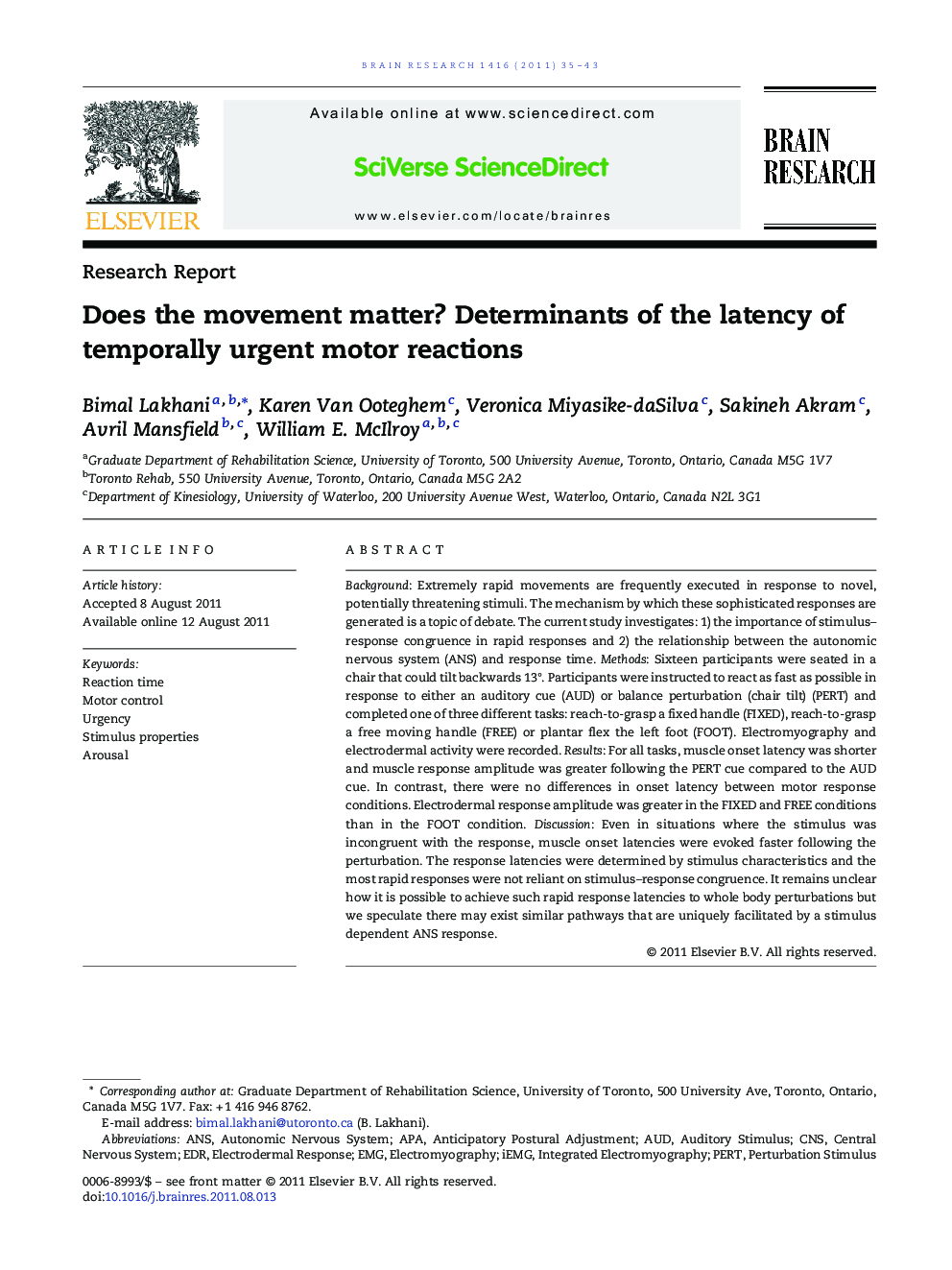| کد مقاله | کد نشریه | سال انتشار | مقاله انگلیسی | نسخه تمام متن |
|---|---|---|---|---|
| 4325731 | 1614023 | 2011 | 9 صفحه PDF | دانلود رایگان |

BackgroundExtremely rapid movements are frequently executed in response to novel, potentially threatening stimuli. The mechanism by which these sophisticated responses are generated is a topic of debate. The current study investigates: 1) the importance of stimulus–response congruence in rapid responses and 2) the relationship between the autonomic nervous system (ANS) and response time.MethodsSixteen participants were seated in a chair that could tilt backwards 13°. Participants were instructed to react as fast as possible in response to either an auditory cue (AUD) or balance perturbation (chair tilt) (PERT) and completed one of three different tasks: reach-to-grasp a fixed handle (FIXED), reach-to-grasp a free moving handle (FREE) or plantar flex the left foot (FOOT). Electromyography and electrodermal activity were recorded.ResultsFor all tasks, muscle onset latency was shorter and muscle response amplitude was greater following the PERT cue compared to the AUD cue. In contrast, there were no differences in onset latency between motor response conditions. Electrodermal response amplitude was greater in the FIXED and FREE conditions than in the FOOT condition.DiscussionEven in situations where the stimulus was incongruent with the response, muscle onset latencies were evoked faster following the perturbation. The response latencies were determined by stimulus characteristics and the most rapid responses were not reliant on stimulus–response congruence. It remains unclear how it is possible to achieve such rapid response latencies to whole body perturbations but we speculate there may exist similar pathways that are uniquely facilitated by a stimulus dependent ANS response.
► Extremely rapid movements are commonly executed in the face of urgency.
► Motor response latency is not dependent on stimulus–response congruence.
► Stimulus characteristics appear to drive the latency of the motor response.
► The autonomic nervous system may facilitate response latency in urgent situations.
► Rapid responses may be mediated by a cortical network shared with volitional movement.
Journal: Brain Research - Volume 1416, 6 October 2011, Pages 35–43